Photos of the Moon - May 2017
Moon Photos with Sky-Watcher Skymax-102 OTA | Moon Photos with Sky-Watcher Explorer 150PDS
On this page, I present photos of the moon that I took on May 2, 2017 when I used my Sky-Watcher Skymax-102 OTA with 16 mm UWA, 7 mm UWA, and 4 mm UWA eyepieces and on May 5, 2017 when I used my Sky-Watcher Explorer 150PDS with 16 mm UWA, 24 mm WA, and 10 mm WA eyepieces. On both occasions, I had to use the 1:50 method with the Ricoh GR camera. In contrast to the photos from April 2017, the photos have been post-processed.
Moon Photos with Sky-Watcher Skymax-102 OTA with the Camera Held to the Eyepiece
The following photos of the moon were taken at the beginning of May 2017 (May 2, it was nearly half moon). They were taken using the 1:50 method, that is, with the camera held to the eyepiece. In this case, I used my Ricoh GR (28 mm equivalent) at ISO 1600 and underexposed to avoid flare. I used a 16 mm, 7 mm, and a 4 mm UWA eyepiece.
May 2, 2017 - 16 mm UWA Eyepiece
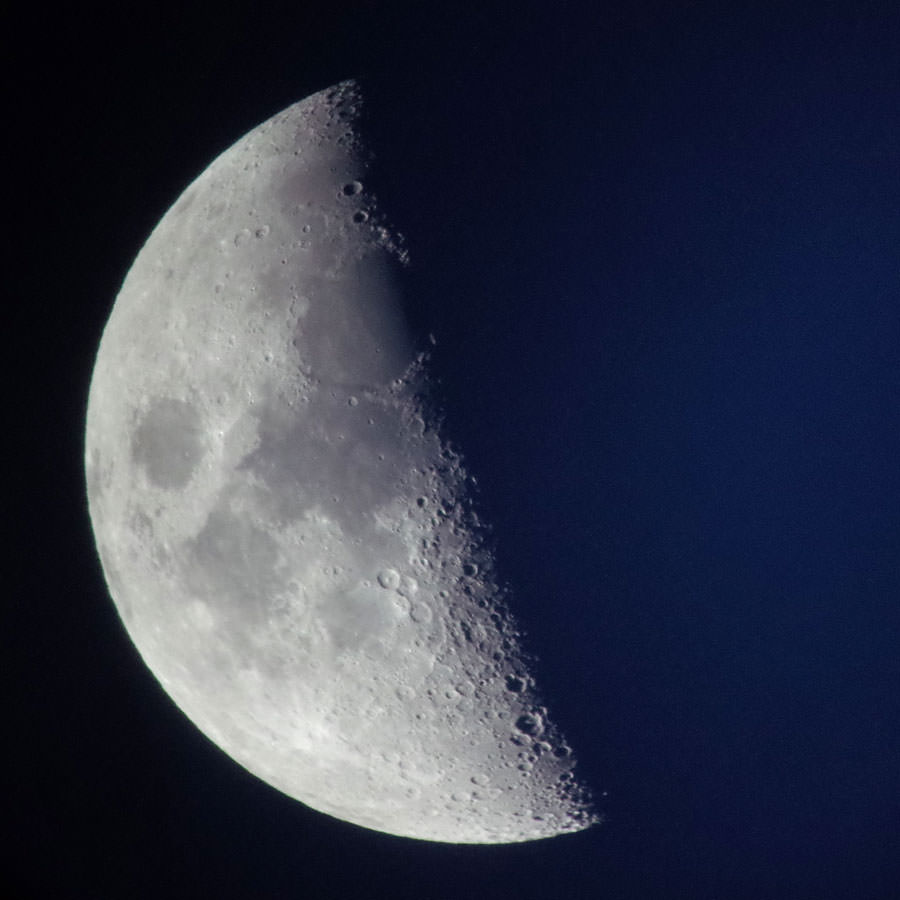 |
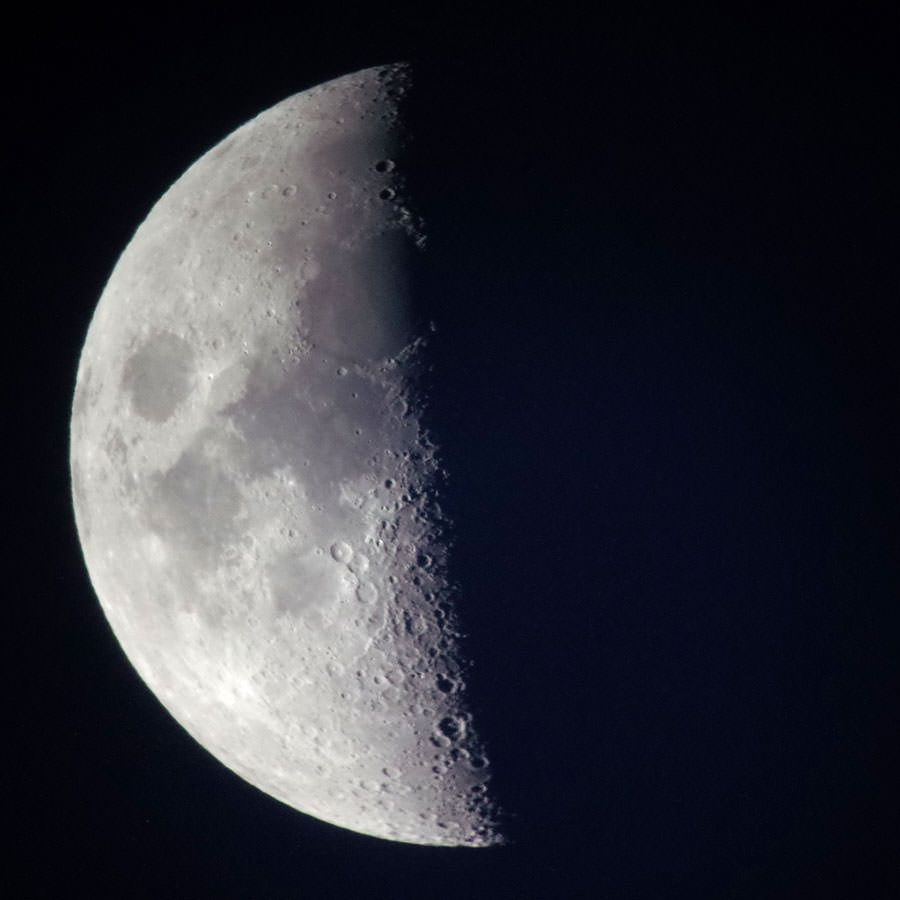 |
|
16 mm UWA eyepiece (about 81 x) - 1800 pixels version |
|
16 mm UWA eyepiece (about 81 x) - 1800 pixels version |
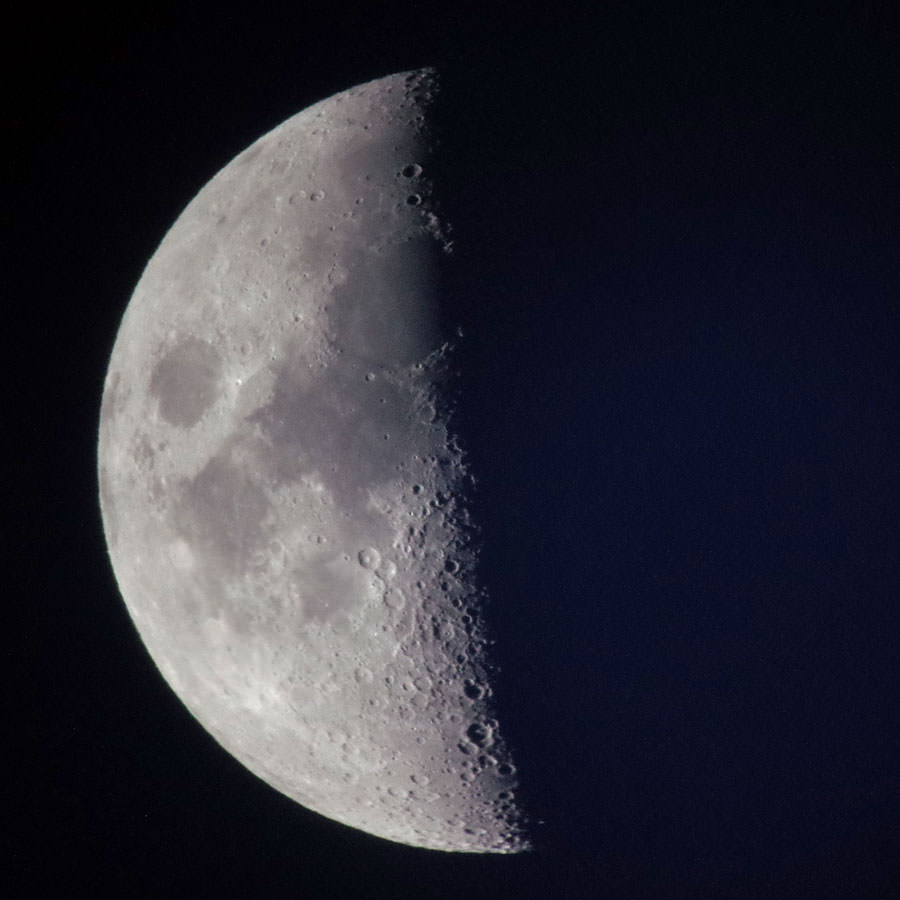 |
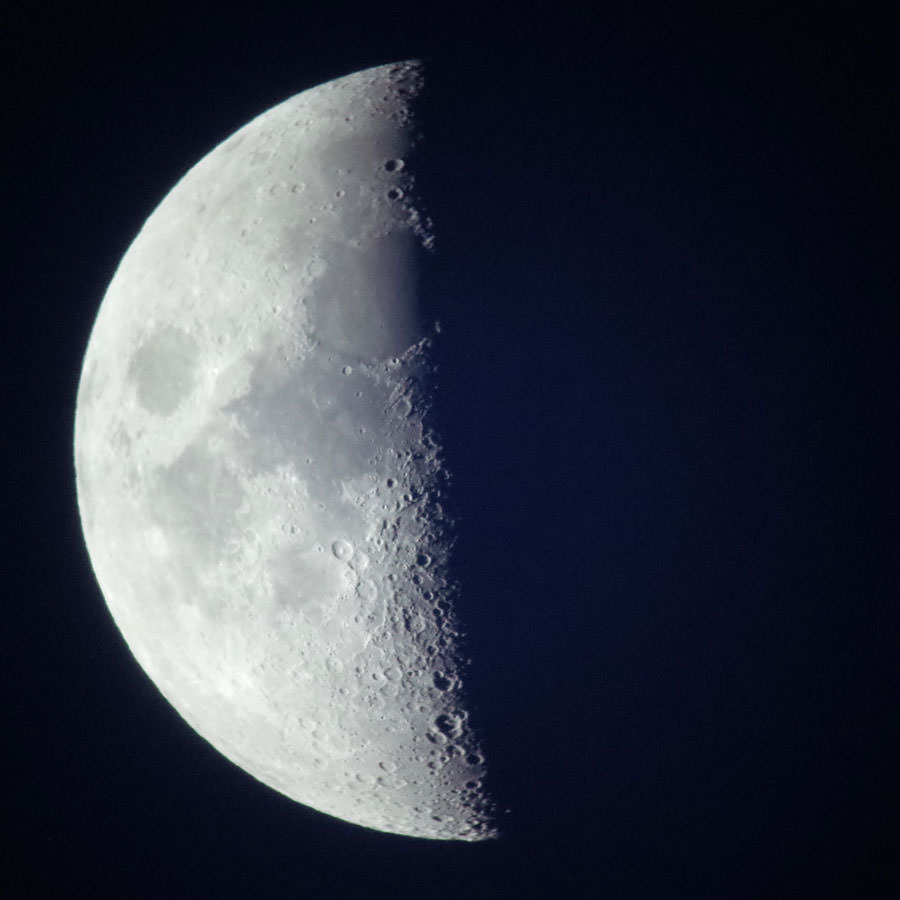 |
|
16 mm UWA eyepiece (about 81 x) - 1800 pixels version |
16 mm UWA eyepiece (about 81 x) - 1800 pixels version |
May 2, 2017 - 7 mm UWA Eyepiece
This time, I find the photos taken with this eyepiece quite acceptable.
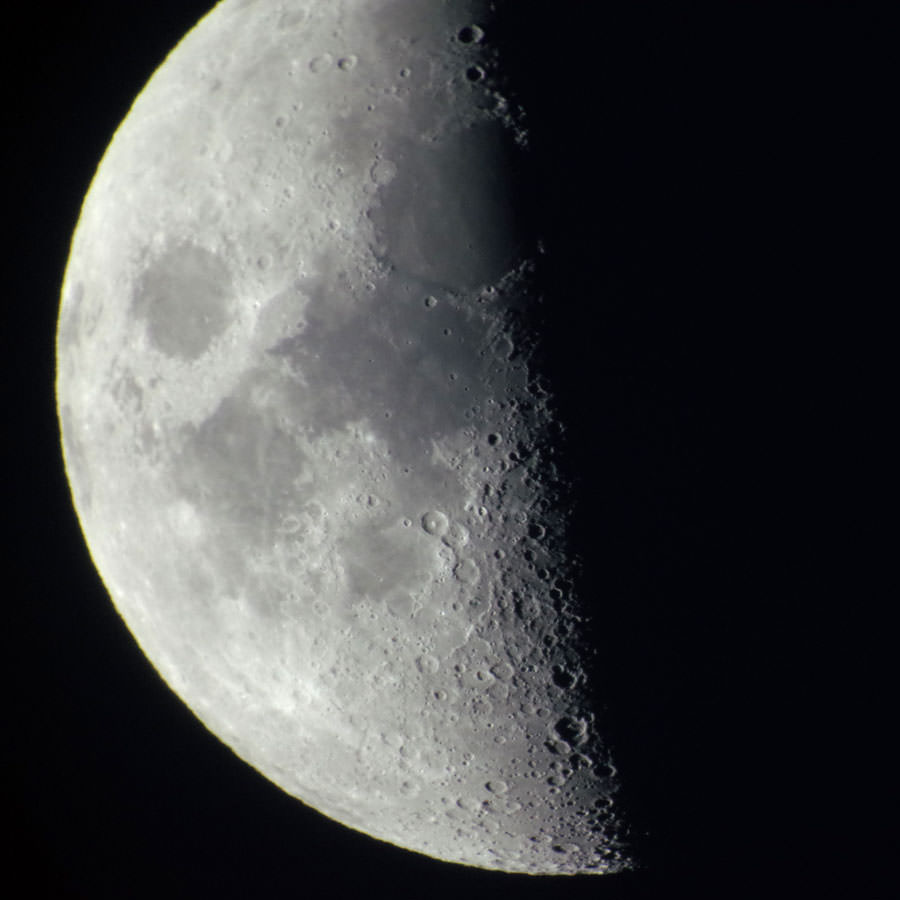 |
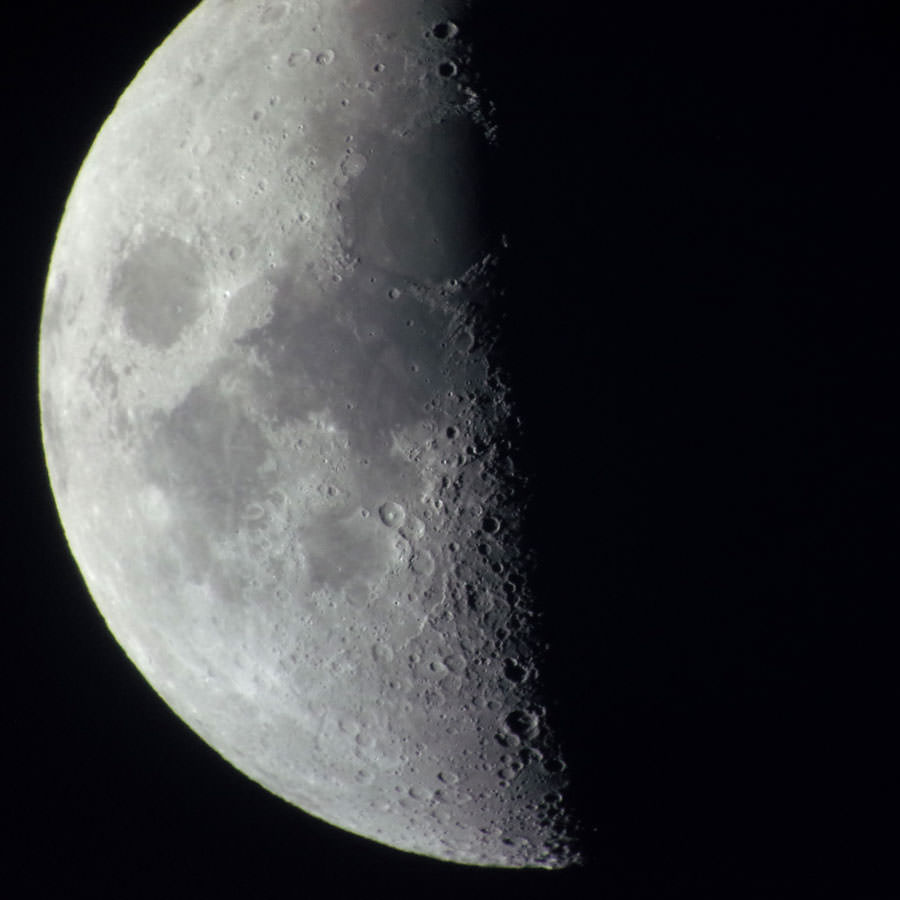 |
|
7 mm UWA eyepiece (about 186 x) - 1600 pixels - 3200 pixels |
7 mm UWA eyepiece (about 186 x) - 1600 pixels - 3200 pixels |
|
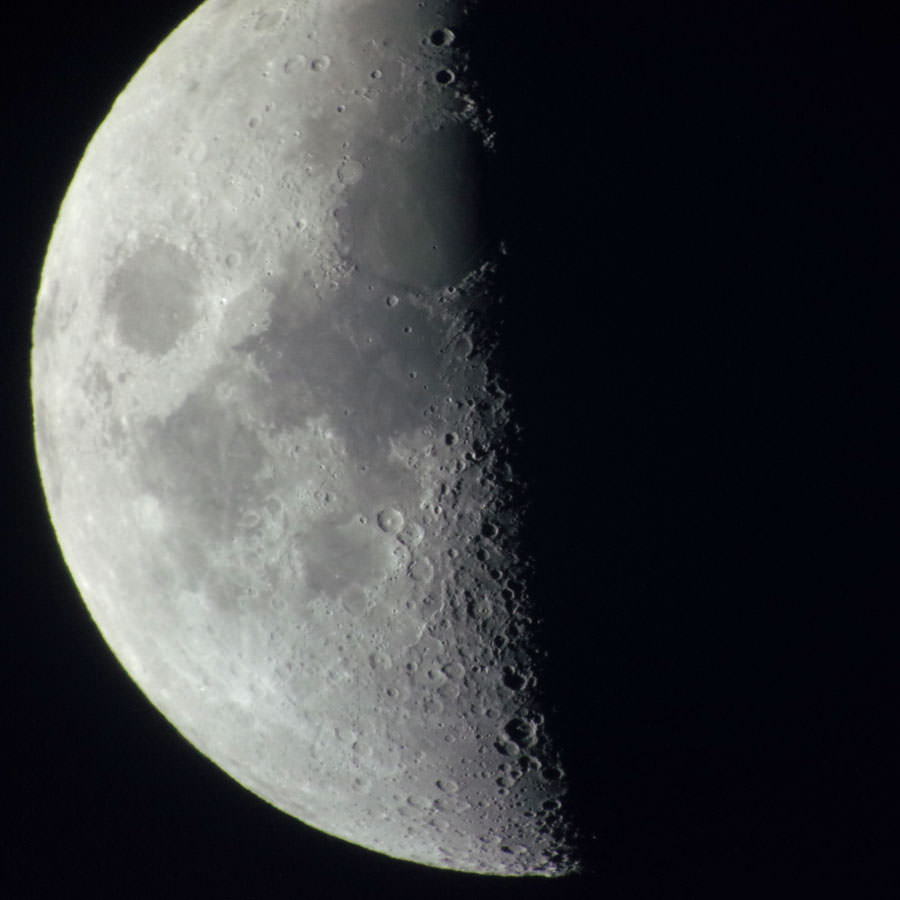 |
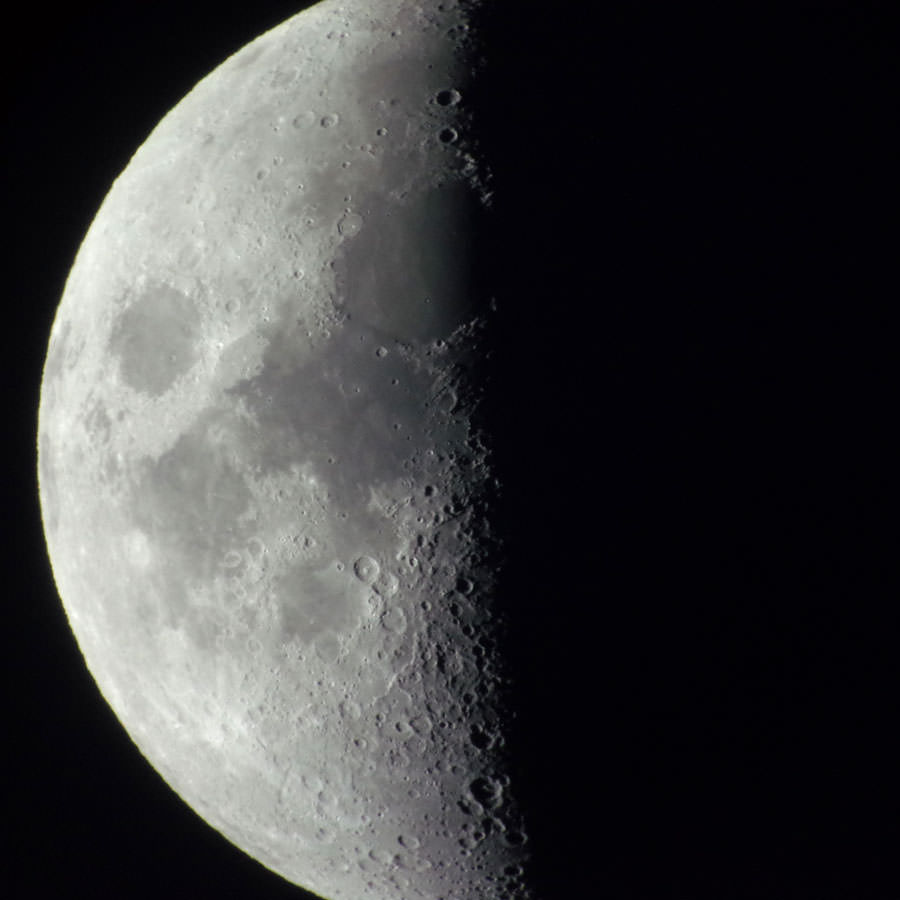 |
|
7 mm UWA eyepiece (about 186 x) - 1600 pixels - 3200 pixels |
7 mm UWA eyepiece (about 186 x) - 1600 pixels - 3200 pixels |
May 2, 2017 - 4 mm UWA Eyepiece
When taking the following photos, I ent beyond the maximum usable magnification just to explore what would happen. Correspondingly, the photos are not really sharp. I present them here anyway so that visitors can get an impression of the to be expected quality (also look at the large versions!).
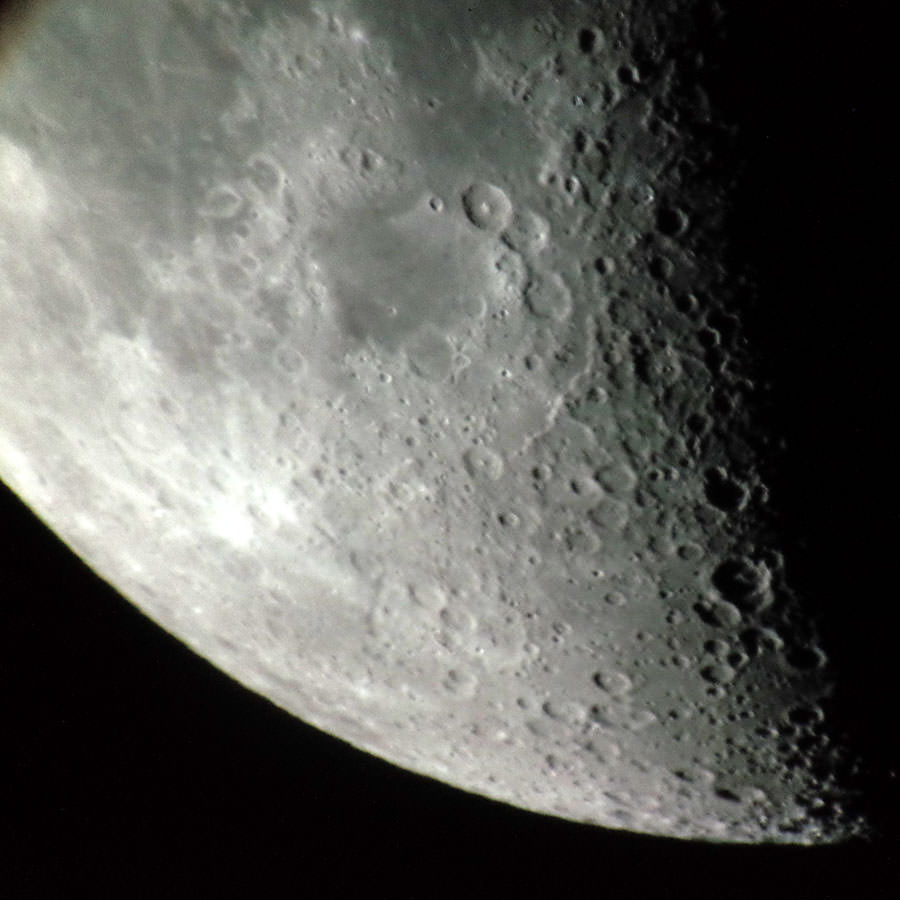 |
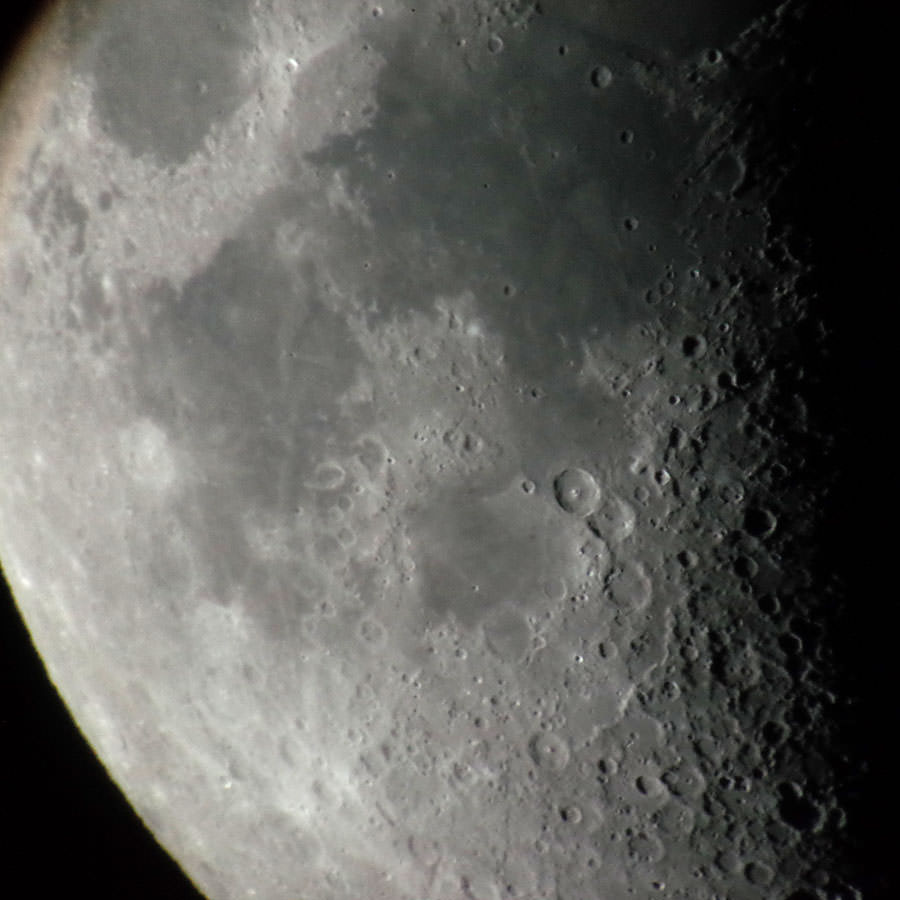 |
|
| 4 mm UWA eyepiece (325* x) - 1600 pixels - 3200 pixels | 4 mm UWA eyepiece (325* x) - 1600 pixels - 3200 pixels |
*) Beyond the maximum usable magnification of about 200 x.
Moon Photos with Sky-Watcher Explorer 150PDS with the Camera Held to the Eyepiece
The following photos of the moon were taken at the beginning of May 2017 (May 5, it was shortly after half moon). They were taken using the 1:50 method, that is, with the camera held to the eyepiece. In this case, I used my Ricoh GR (28 mm equivalent) at ISO 1600 and underexposed to avoid flare. I used a 16 mm UWA eyepiece as well as a 24mm and a 10mm wide-angle eyepiece (the latter two were newly purchased, with the 24mm eyepiece in used, but good condition).
May 5, 2017 - 24 mm WA Eyepiece
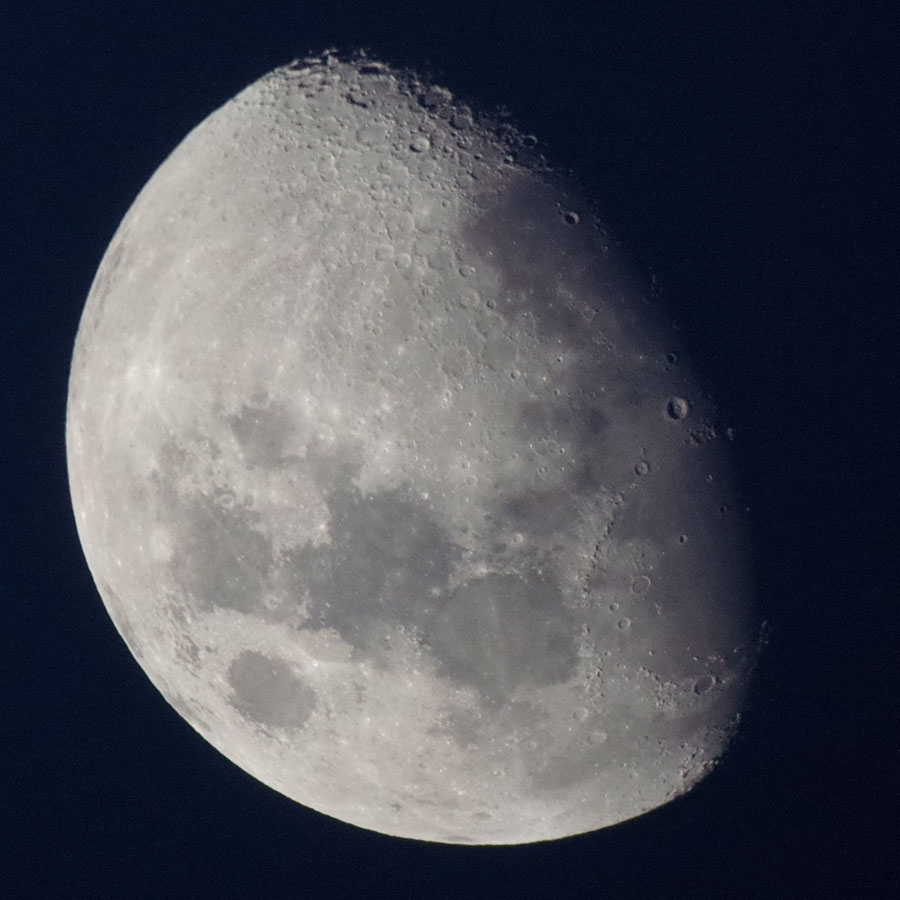 |
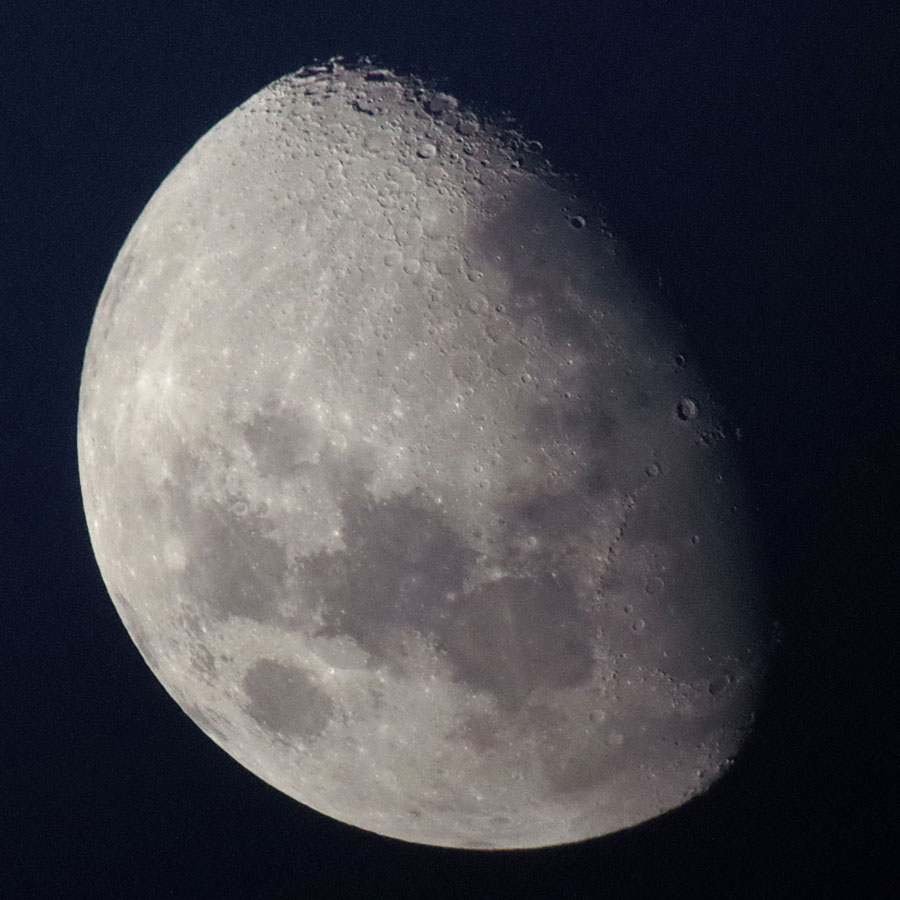 |
|
24 mm WA eyepiece (about 31 x) - 1200 pixels |
24 mm WA eyepiece (about 31 x)- 1200 pixels |
|
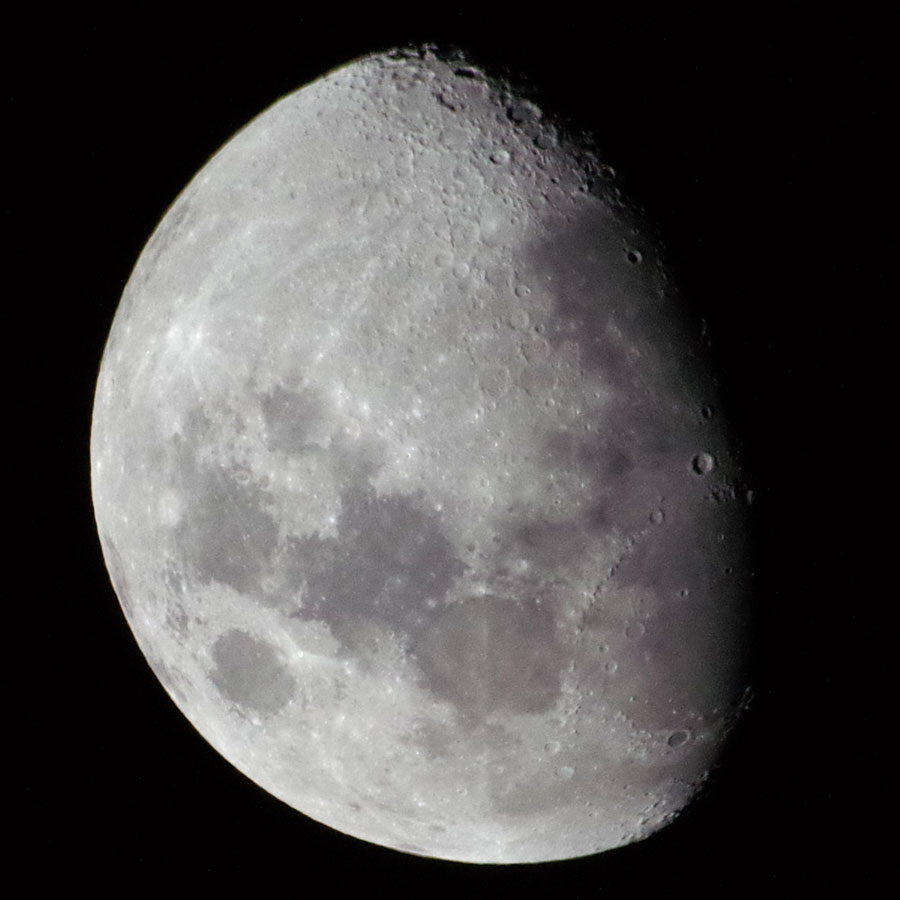 |
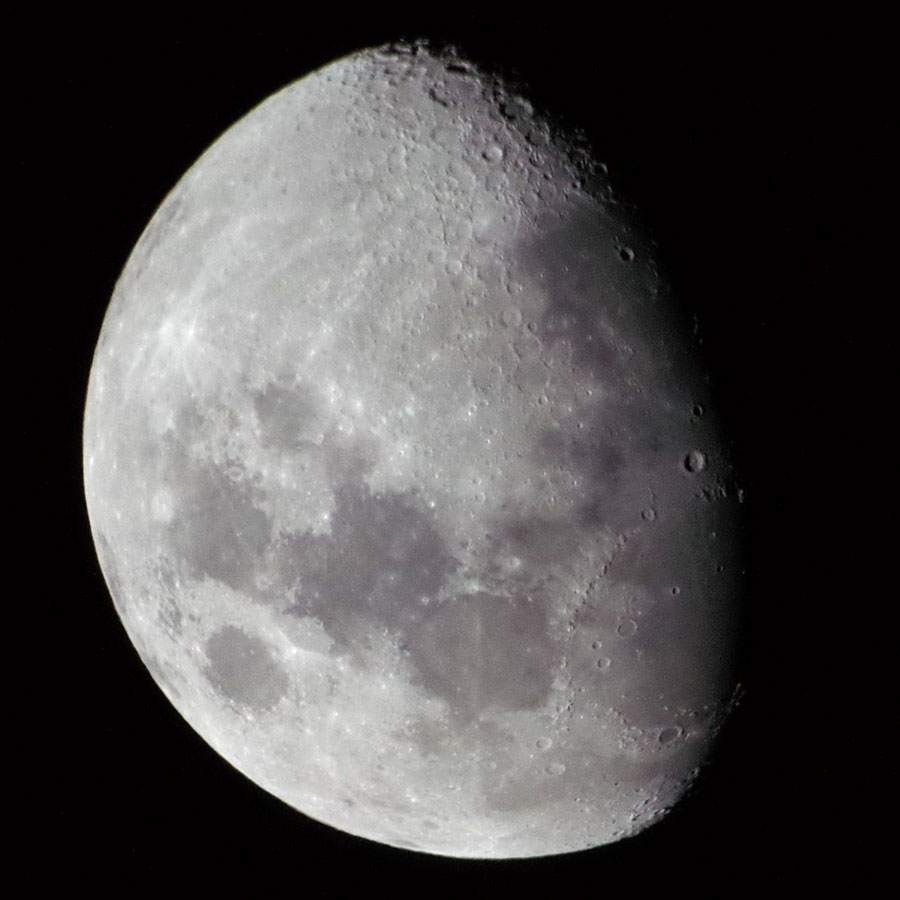 |
|
24 mm WA eyepiece (about 31 x) - 1200 pixels |
24 mm WA eyepiece (about 31 x) - 1200 pixels |
May 5, 2017 - 16 mm UWA Eyepiece
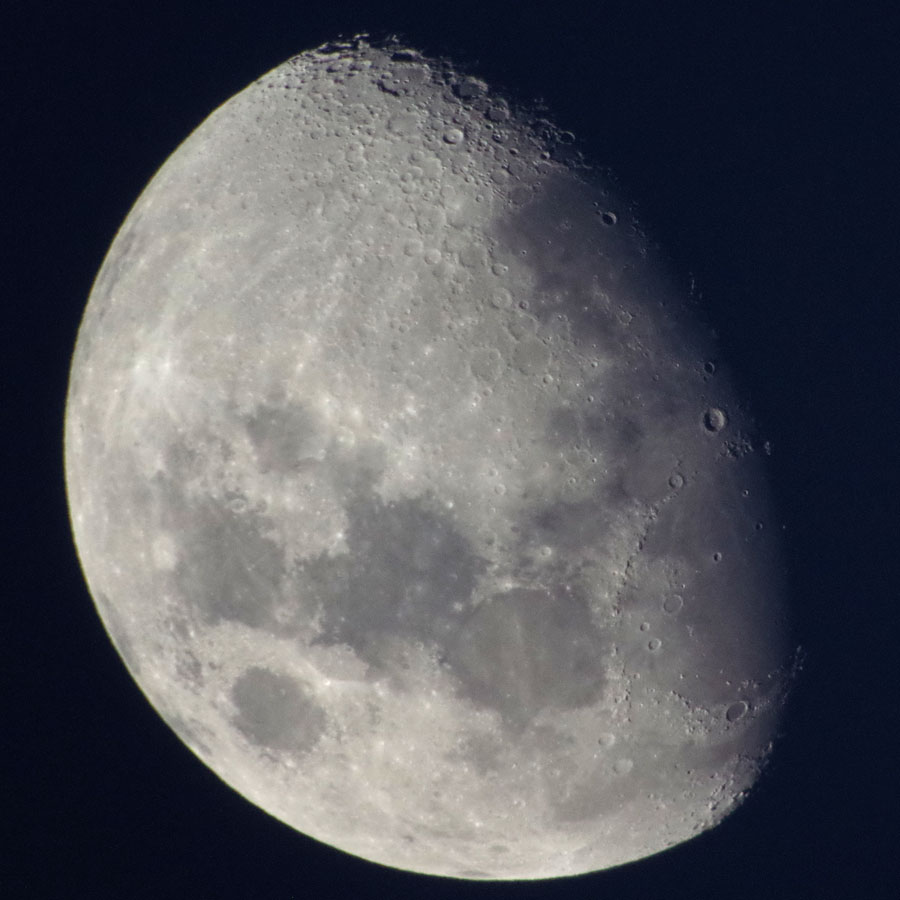 |
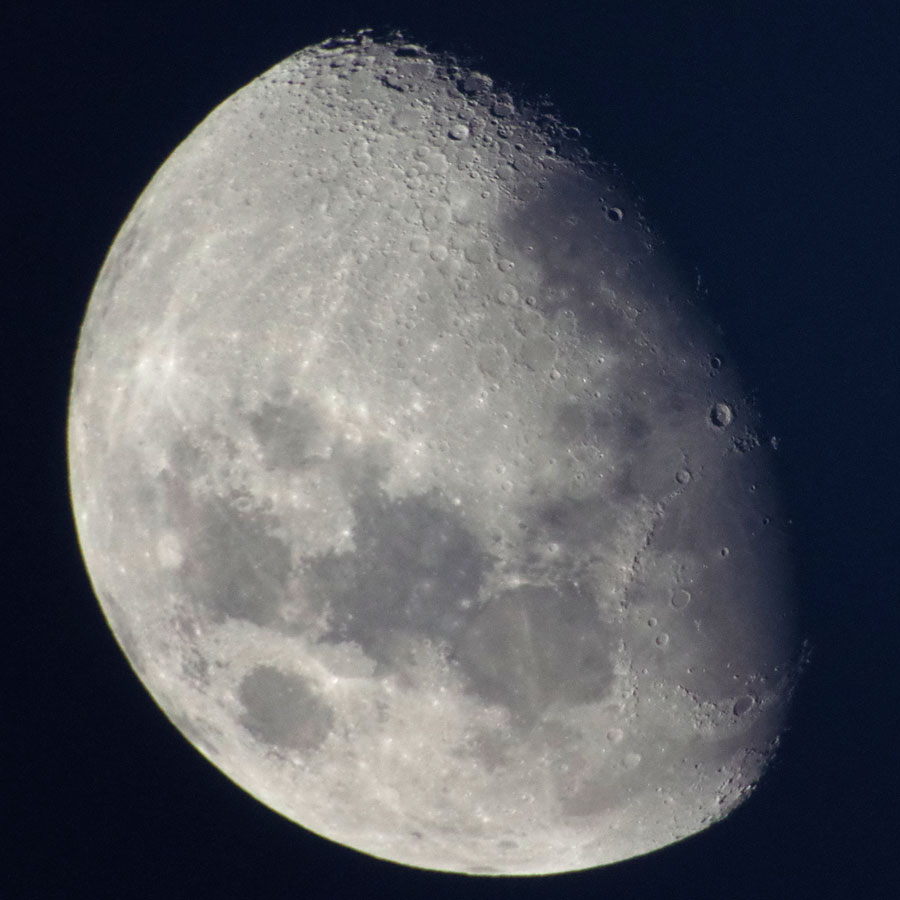 |
|
16 mm UWA eyepiece (about 47 x) - 1800 pixels |
|
16 mm UWA eyepiece (about 47 x) - 1800 pixels |
May 5, 2017 - 10 mm WA Eyepiece
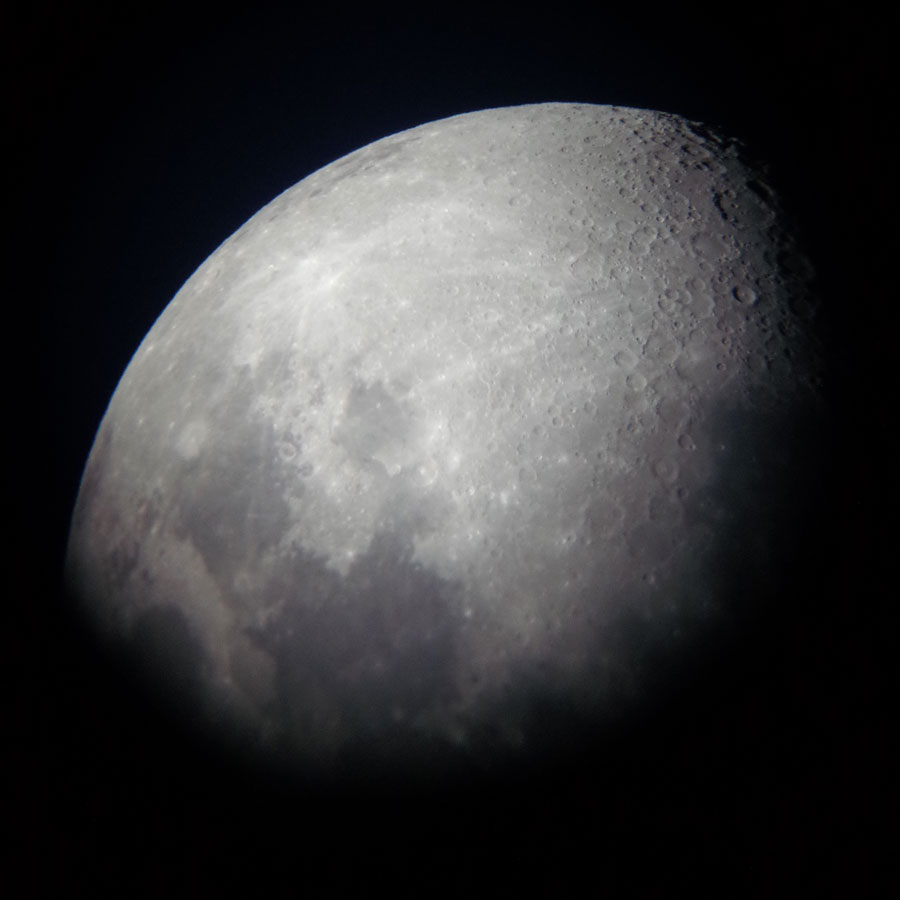 |
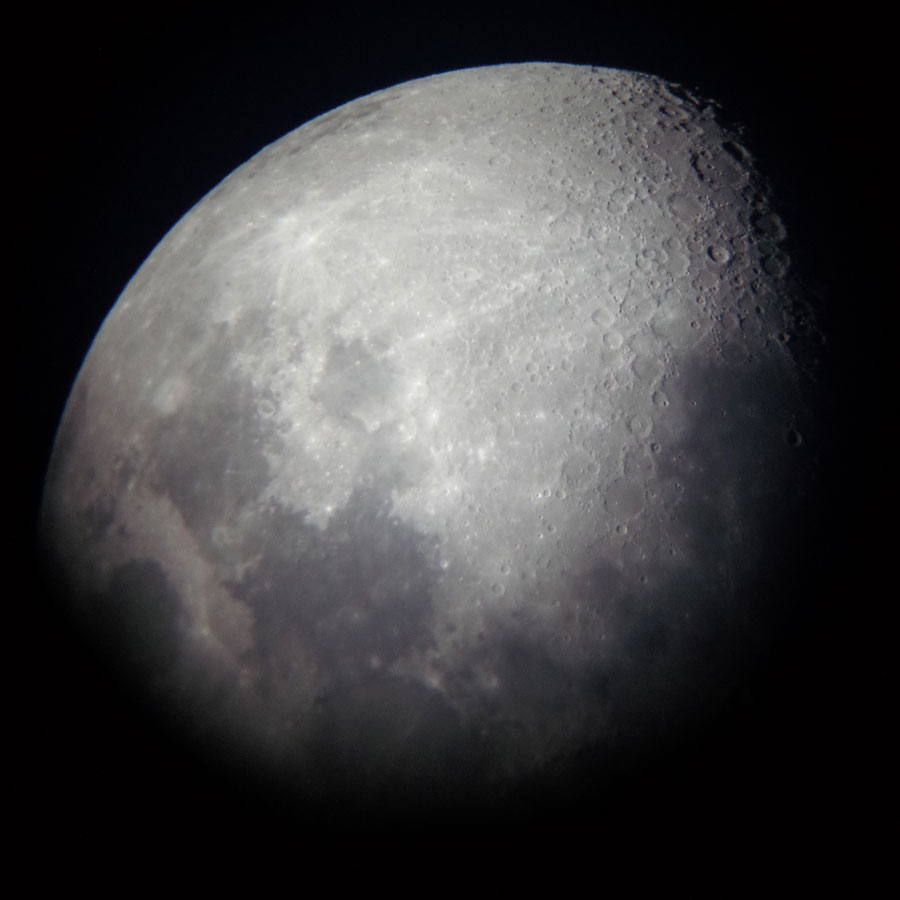 |
|
10 mm WA eyepiece (75 x) - 2400 pixels |
|
10 mm WA eyepiece (75 x) - 2400 pixels |
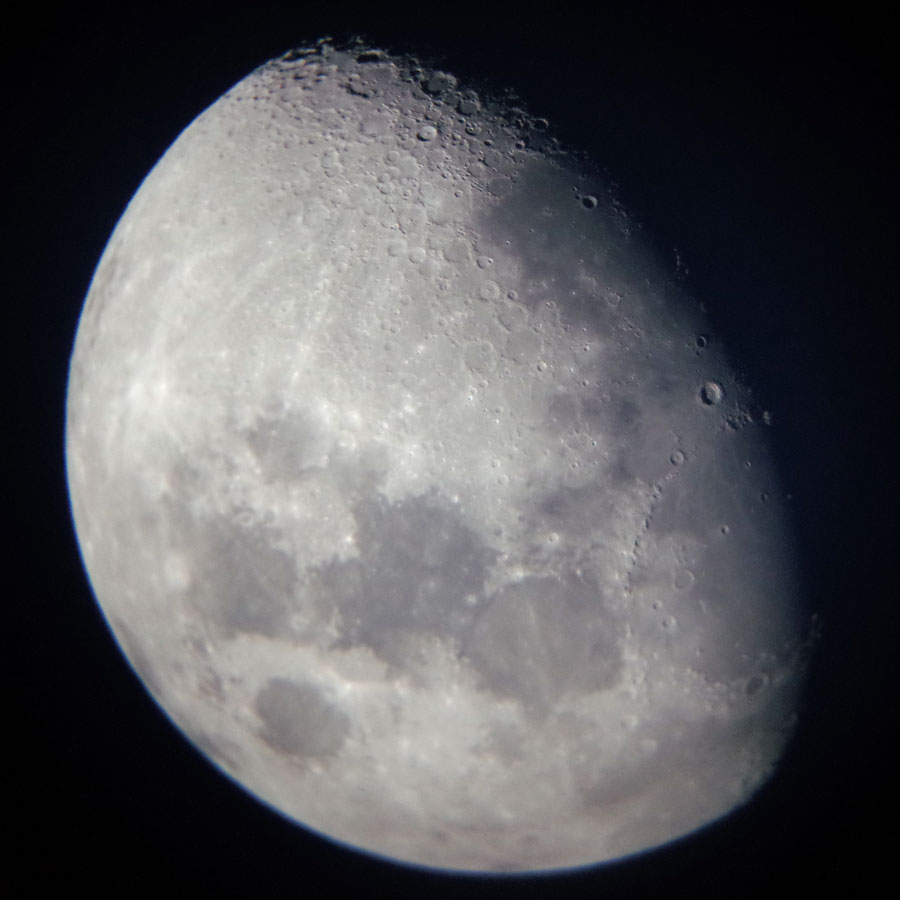 |
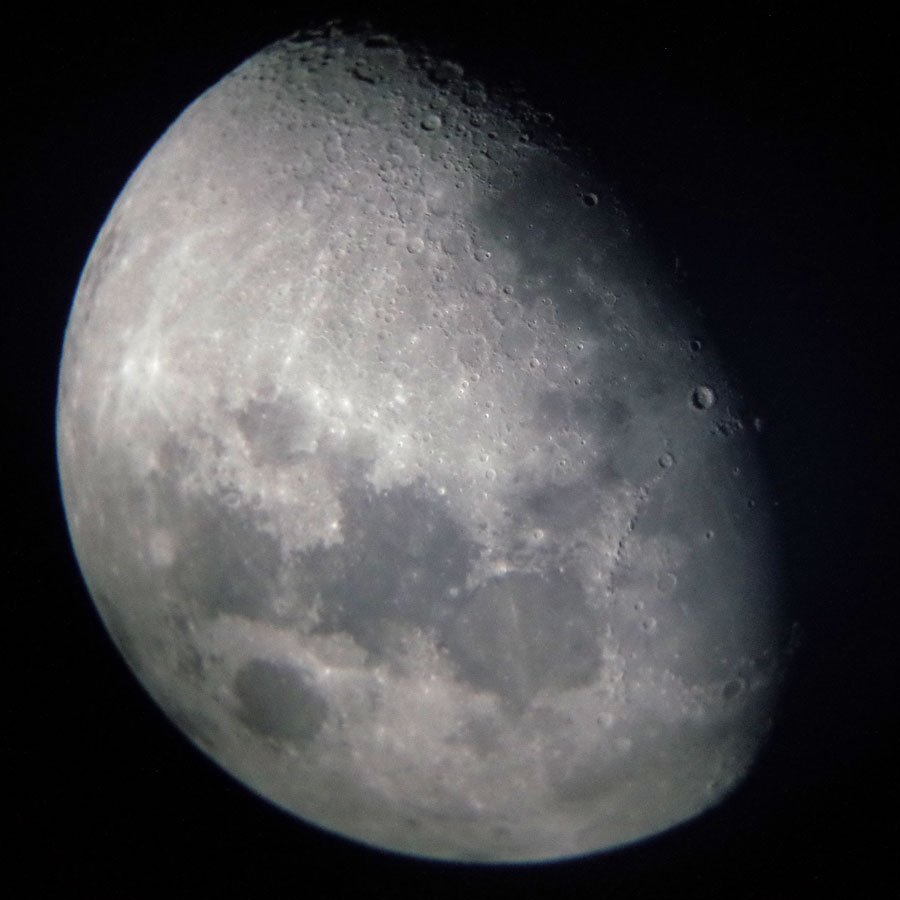 |
|
10 mm WA eyepiece (75 x) - 2700 pixels |
10 mm WA eyepiece (75 x) - 2700 pixels |
|
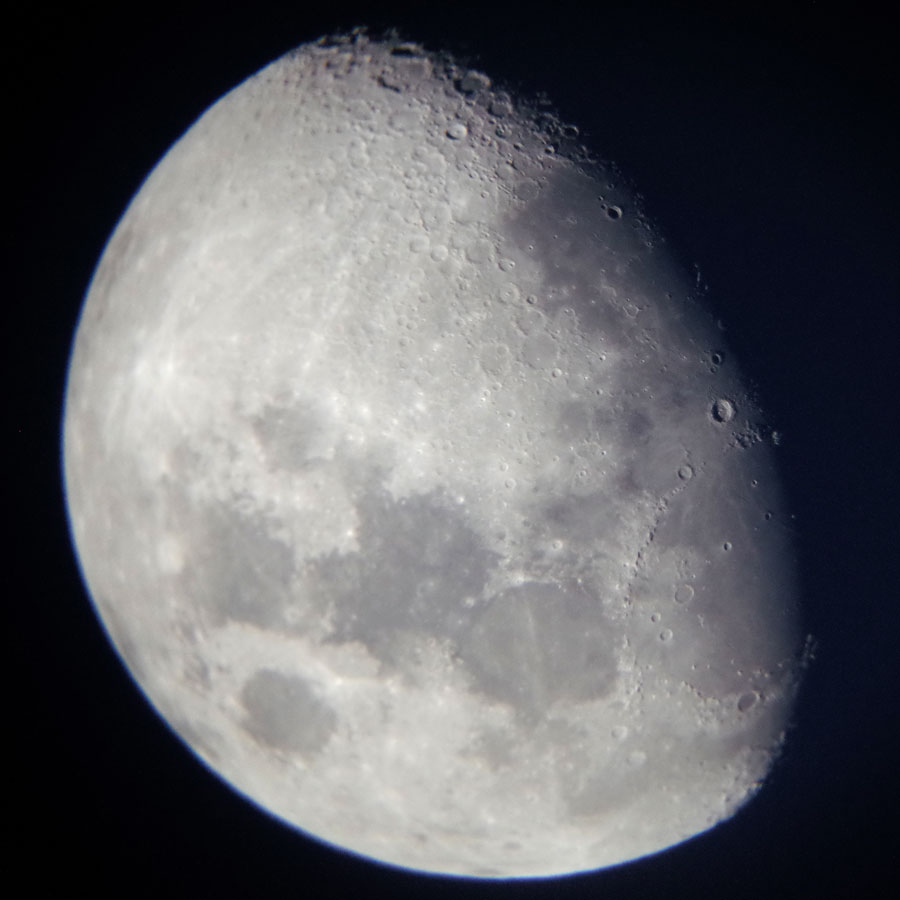 |
||
10 mm WA eyepiece (75 x) - 2700 pixels |
|
Comparison of Different Focal Lengths of Eyepieces
To provide a certain impression of the different focal lengths of the eyepieces, I cut out a 600 x 600 pixel section from the 100% photos and put them together below for comparison. Since I only took two usable photos with the 16 mm eyepiece, I duplicated these photos.
In addition, I marked a crater in each serie, which can be seen on all sections, with a red arrow.
First Set
The indicated crater contains a white spot and another crater inside. There are also several craters in its rim or close to the rim.
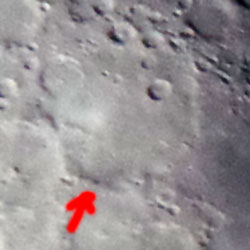
24 mm |
16 mm |
10 mm |
||
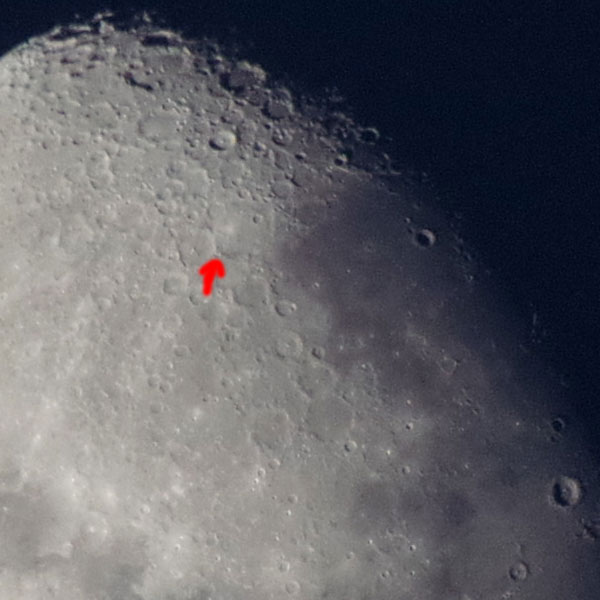 |
 |
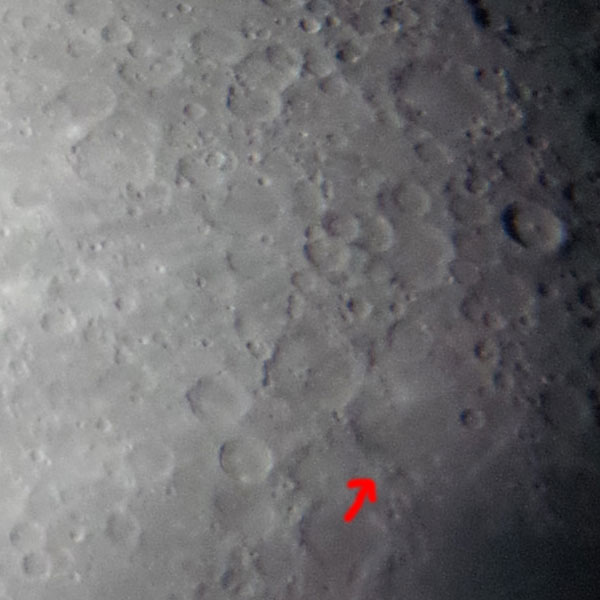 |
||
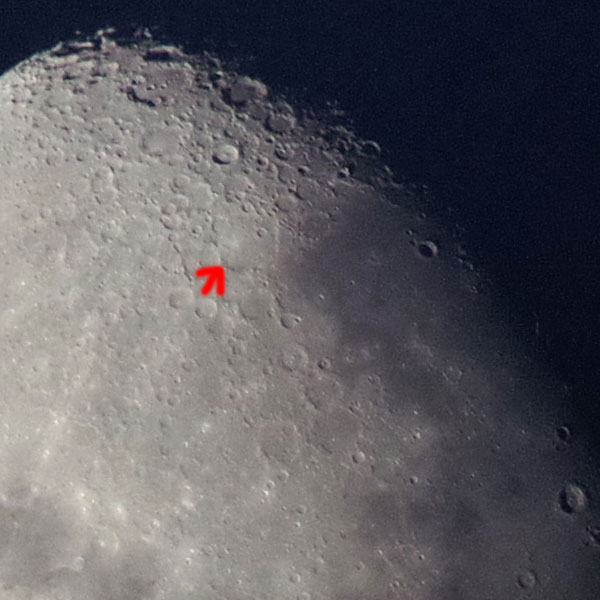 |
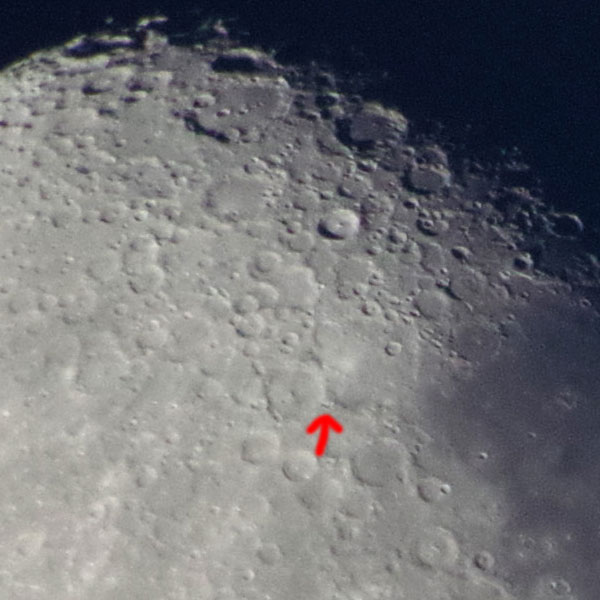 |
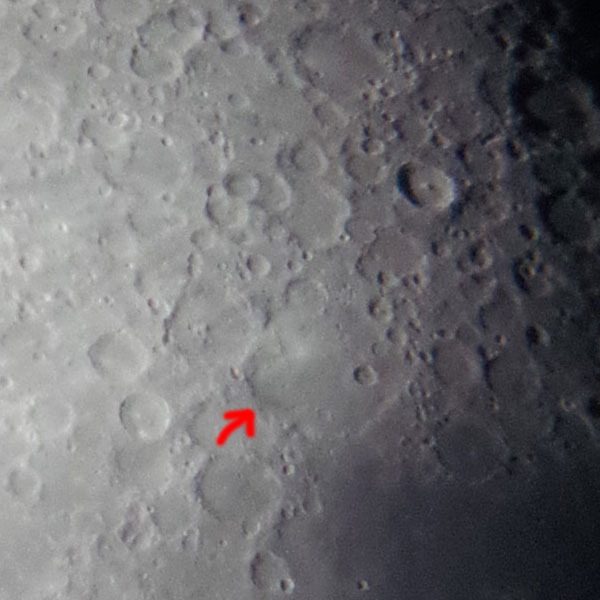 |
||
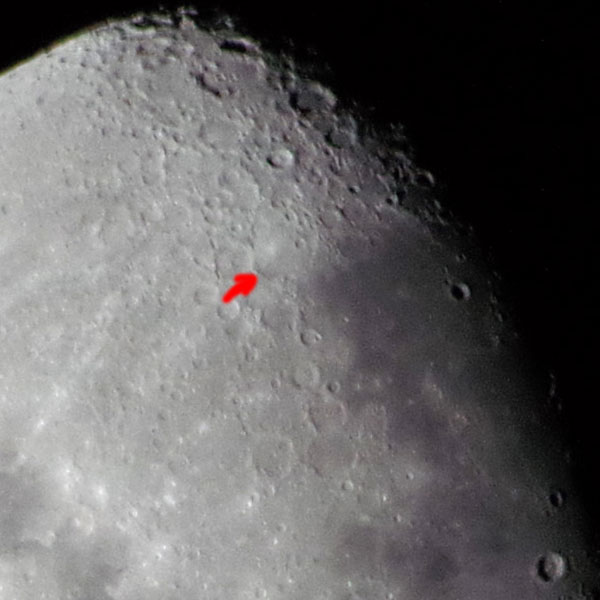 |
 |
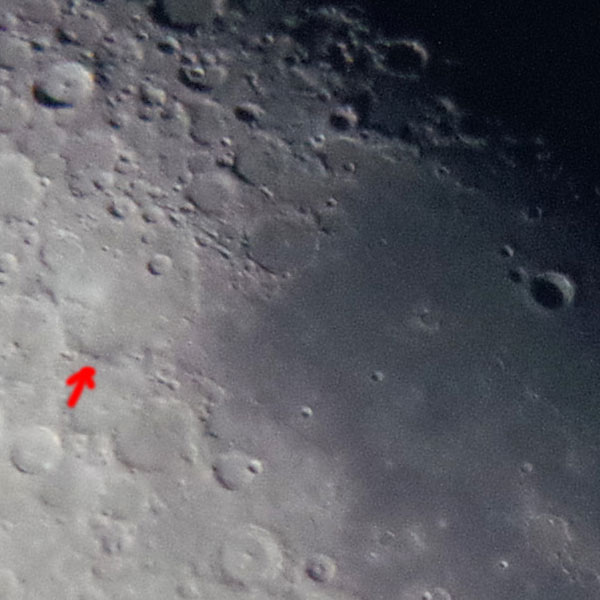 |
||
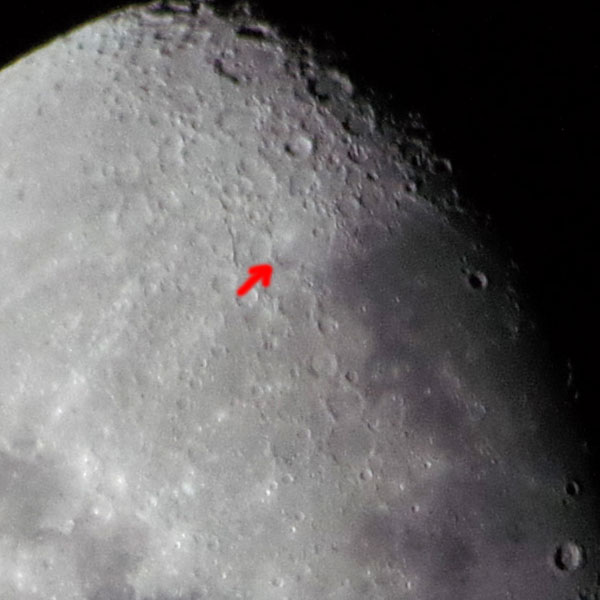 |
 |
 |
Second Set
The indicated crater looks a bit like an "8".
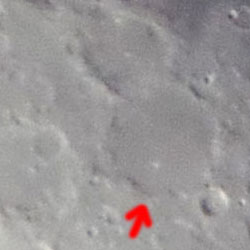
24 mm |
16 mm |
10 mm |
||
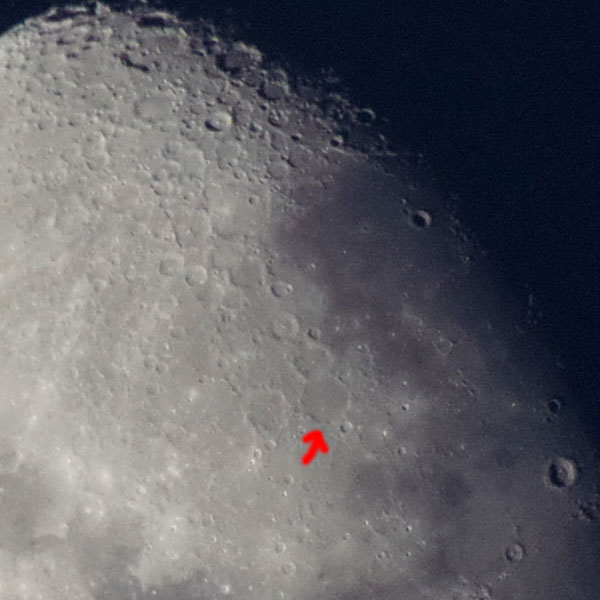 |
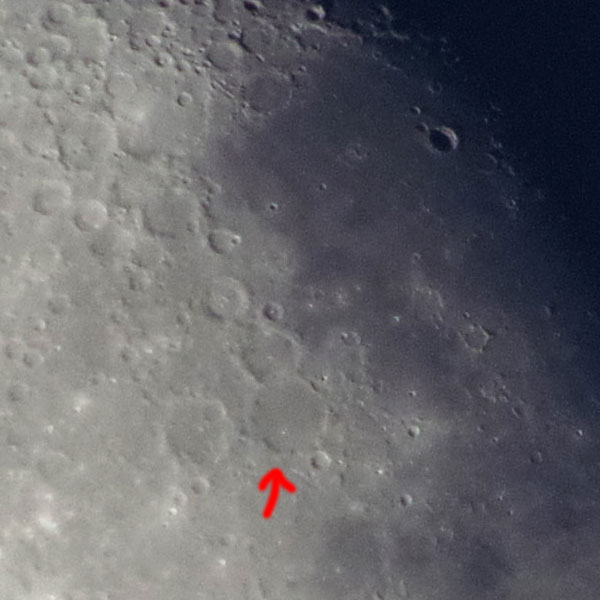 |
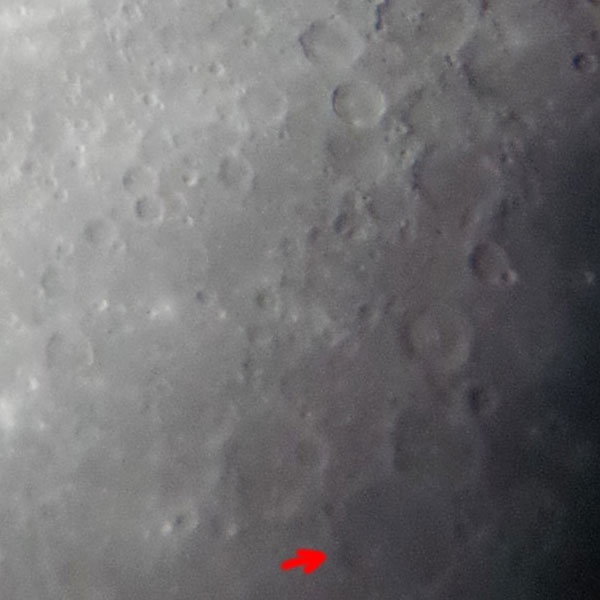 |
||
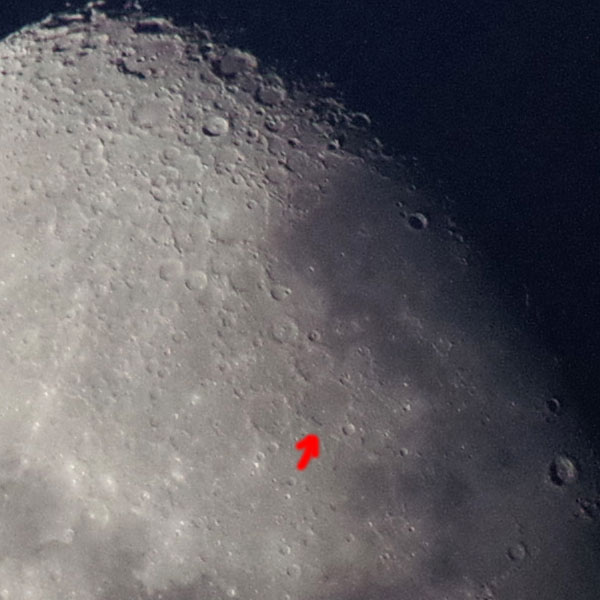 |
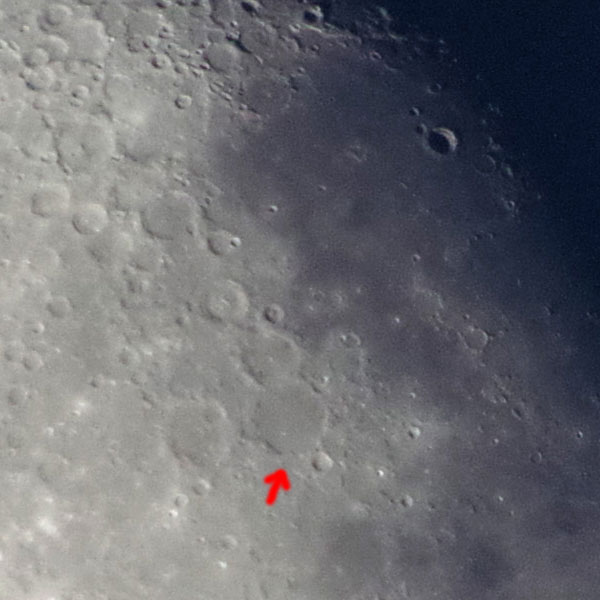 |
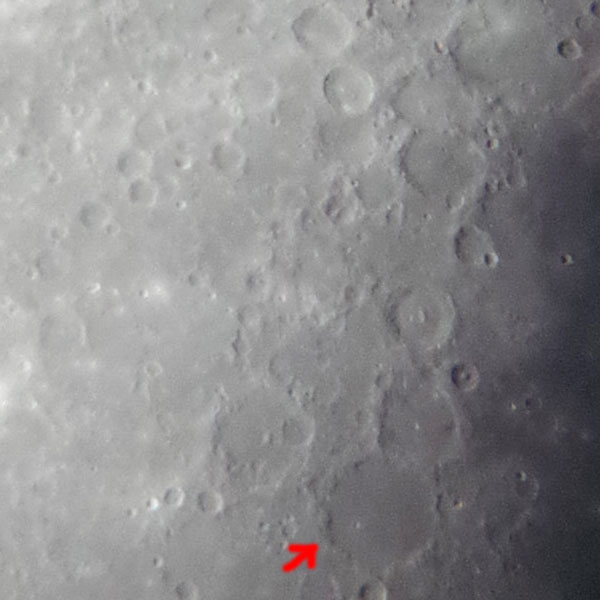 |
||
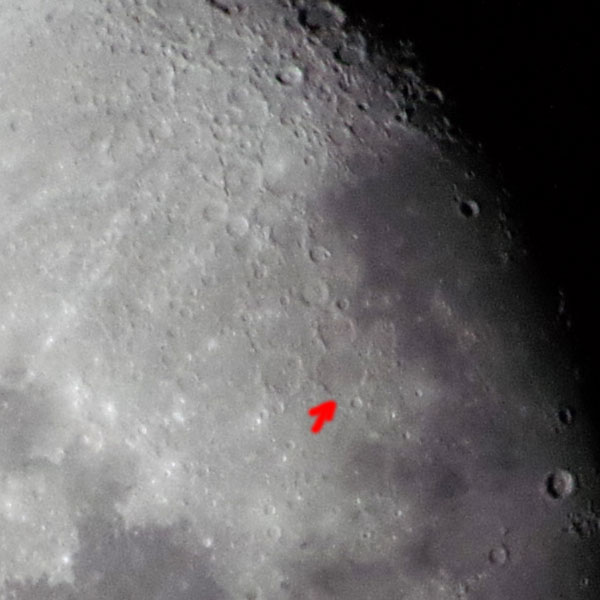 |
 |
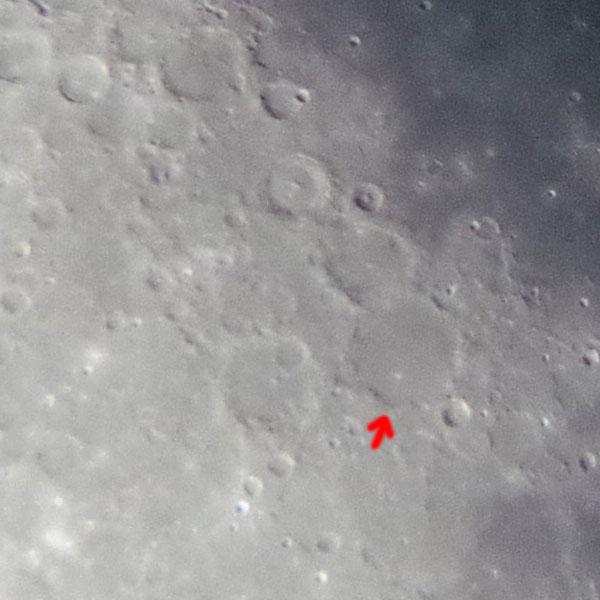 |
||
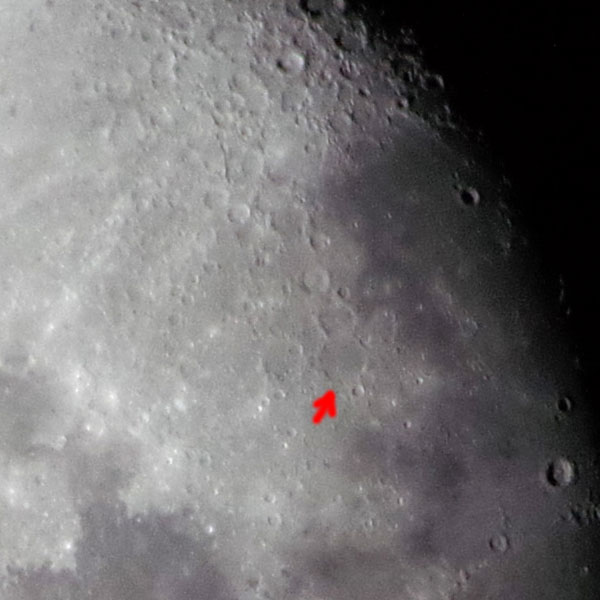 |
 |
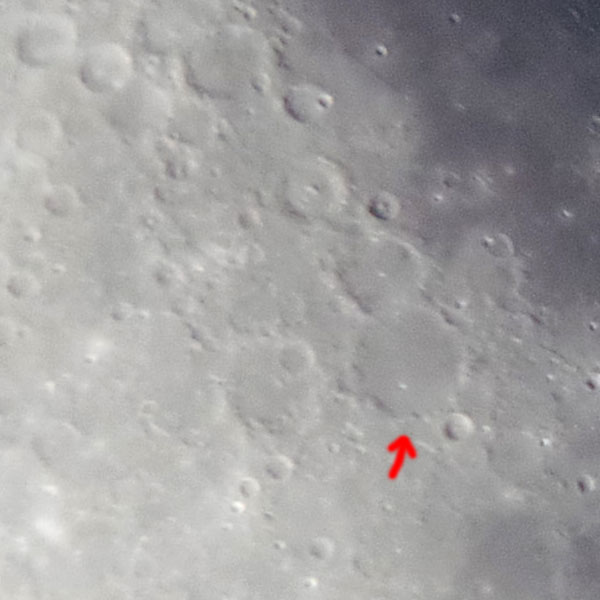 |
| 06.05.2017 |